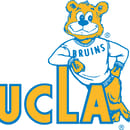Underrepresentation of women in the STEM industries is a key issue that we as a society are working to address. Too often, women in the STEM fields fly under the radar, and we don’t hear about their achievements and accomplishments the way that we should. There are certain women that everyone should know because of the contributions they’ve made to the fields of science, technology, engineering and math. To educate myself about women making waves in STEM, I read up on some Women You Should Know and compiled this list:
- Rosalind Franklin
-
If you’ve heard Rosalind Franklin’s name, you likely haven’t heard of her for the right reasons. Although Franklin has made many significant contributions to three different fields of science, she is best known for not being recognized for her part in the discovery of DNA’s double helix structure. However, Franklin should be known for discovering the molecular reason that some types of coal cannot be graphitized and for figuring out the structural relation of the protein and genetic contents in the tobacco mosaic virus. She started out as a scientist working for the government on why carbon worked to filter out poisonous gases during wartime. Her later work with X-Ray techniques led to her discoveries in DNA and viruses, which led her from Paris back to England to continue working on DNA. Franklin should be known and revered for her accomplishments, rather than solely known for something that was done “to” her.
- Lucy Evelyn Cheesman
-
Lucy Evelyn Cheesman was a pioneer entomologist of the Pacific Islands. Her fieldwork often led her to do dangerous things that risked her life. During an expedition aboard the St. George, where Cheesman worked with other researchers as tourists who funded the expedition saw the sights, Cheesman grew frustrated by the short times at each site limiting her work. Cheesman hatched a plan to leave the expedition and spent time on her own collecting specimen and doing research. She traveled extensively to collect specimen, challenging assumptions about insect species and searching for new species. Cheesman also wrote sixteen books about her adventures, which funded each of her subsequent experiences. Her spirit of adventure and her many expeditions should be looked at as a goal for girls who want the chance to take part in research. Hers is a name that should be known for her accomplishments and her hard work.
- Dr. Gladys West
-
Dr. Gladys West is a mathematician who was inducted into the Air Force Pioneers Hall of Fame on December 6, 2018. She made decades of contributions to the Air Force’s space program and did computing for the US military before electronic systems came into existence, and she is the person we should all thank for being able to find our exact locations and figure out our ways. West worked for over a decade to make calculations and figure out the process that has evolved into the GPS system we use today. While she has made great contributions to our everyday lives, I bet most of us didn’t even know her name. Dr. Gladys West is a woman who worked for years to help the military with a technology that has become central to so many of our lives today. I know I use GPS technology almost everyday to navigate my way, and without her contributions, our lives would be dramatically different.
- Mildred Cohn
-
Mildred Cohn worked in Nuclear Magnetic Resonance. After completing her undergraduate and Master’s degree studies, she had to take a job in the industry to save money to continue her PhD studies. She worked at NACA as a fuel injection chemist and was the only woman in a group of seventy lab researchers. As the only woman, the lab administrator refused to allow her to perform experiments; she could only design experiments before handing them off to male colleagues. After two years, she returned to Columbia to work under Nobel laureate Harold Urey and made a name for herself, as she worked not only as a chemist but also in machinery to build the equipment she needed without a budget. Years later, she decided to work on ATP in Gerty Cori’s lab. She investigated its structure, metabolic reactions and how it powers all living things. It took her twenty-two years of work on ATP before she was finally given a full professor role with Washington University at St. Louis, and as her work improved as technology improved, she was awarded the National Medal of Science (1983) and the Chandler Medal (1986). Her accomplishments with ATP changed the way that we diagnose illnesses. Although Cohn was not recognized for her achievements as early on as she should’ve been, and though she struggled through gender discrimination, Cohn should be known for changing how we diagnose illness.
- Christine Weber
-
Christine Weber is a technology veteran and Sling TV’s most senior female executive. She leads a team of hundreds of technical experts, programmers and engineers, as they build the future of live streaming TV. She is often the only woman who sits in those high-level executive meetings in a male-dominated industry. She actually spends time sharing her experiences in the field and her thoughts on why women are uniquely suited for this kind of work. She wants other women to get involved in technology and says that “If you have something that you’re passionate about, go for it and stay with it.” Weber should be looked at as a role model for girls today. She worked hard to get where she wanted to go and she believes that we each control our own destiny.
- Ada Lovelace
-
When you hear the name Ada Lovelace, you most likely do not think of her accomplishments. She has been highly fetishized in the world today, but we should focus instead on her intellectual fame. Lovelace’s fame lives and dies with one paper that she wrote. She wrote no other papers, but this one was so important that we still talk about it today and will probably never stop. In 1833, at just 17 years old, Lovelace met Charles Babbage, the creator of 19th century England’s most Impossible Thing, the Difference Engine, which was supposed to be able to automatically calculate data tables with divided differences (in simpler terms, a division calculator). As a result of years of work on the Difference Engine, Lovelace wrote her paper on breaking down a problem to operations and variable and encoding a solution on a set of instructions that would allow for the end result to be calculated. Overall, Lovelace should be known for her accomplishment—computing results in a time before computers—rather than as a fetish. She worked hard on a problem that because of her, we can easily plug into a calculator today.
- Mary Somerville
-
For years as a child, Mary Somerville rebelled against her parents. Instead of being the “civilized” girl her parents wanted her to be, she wanted to pursue mathematics, the central love of her life. Her parents were against this “unfashionable” obsession that caused Somerville to stay up all night studying Euclid or go over his proofs from memory. She was handed off to her first husband Samuel Greig, who shouldered her with duties and discouraged her from her passion. He passed away young, and a year later, Somerville married her cousin, who dedicated himself to helping her. After studying French mathematicians extensively, Somerville began her own work in 1827, translating and expanding Laplace’s original two volume work, adding explanations where he assumed the reader would follow. She then wrote a second book on physical sciences and the cutting-edge work being done in the field, from electricity and magnetism discoveries to gravitational consequences. After decades of struggle to follow her passion and decades with a supporting husband, Somerville should be known for taking difficult-to-understand information and making it accessible and easily digestible for the public. We should look at her as a woman who fought for what we take for granted today, an education.
Women are few and far between in tech history. Unfortunately, they are also not publicly lauded for their achievements and often go unknown and unrecognized. As we as a society aim to inspire more women and girls to pursue STEM careers, we also look to support other women and work together to break the stigma of women in STEM. The underrepresentation of women in STEM is a key issue that we are all too aware of. Women currently represent only 24% of the STEM industry, and there is a distinct lack of encouragement and prominent role models for young girls who could be interested in a career in STEM. Women have been some of the greatest pioneers in technological history and should be regarded as such. We should thank these women for their contributions, but also recognize them for their hard work and remember them as technology continues to progress.



